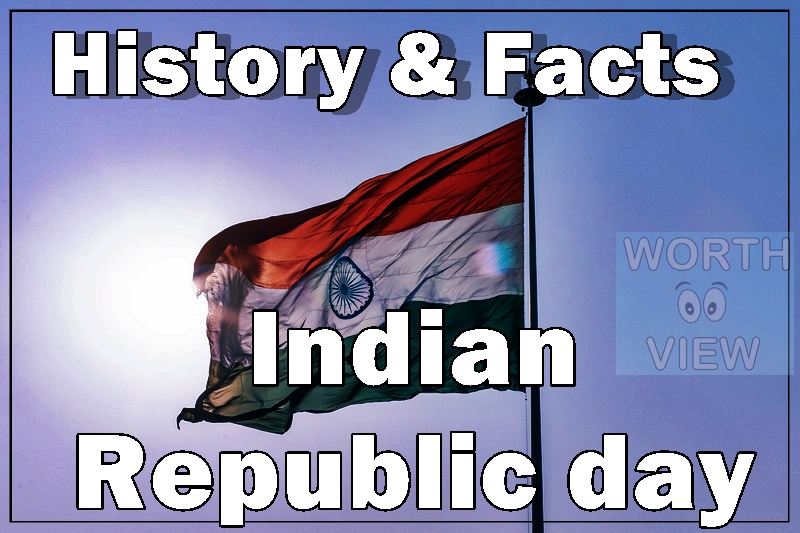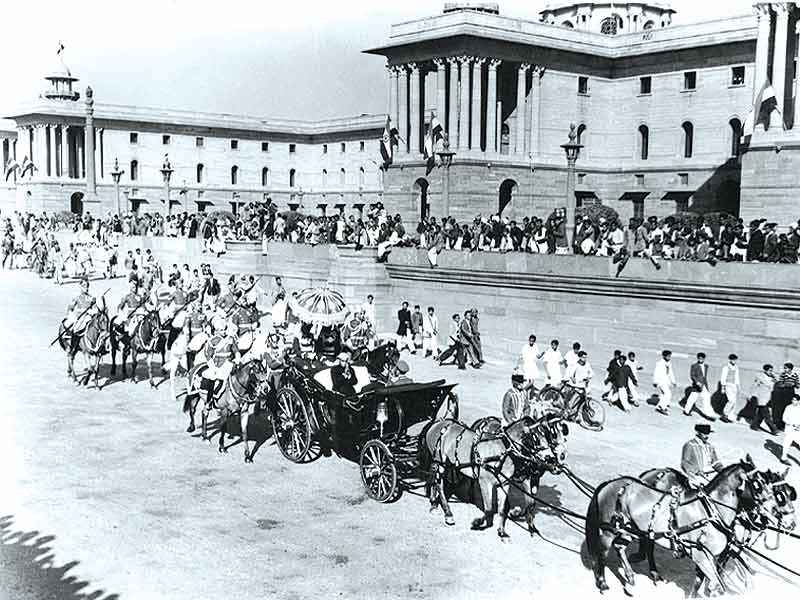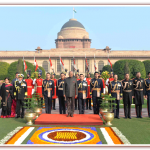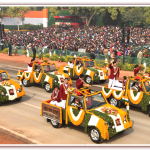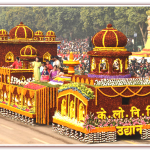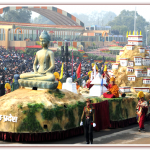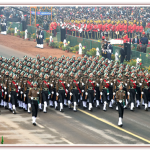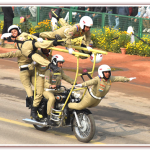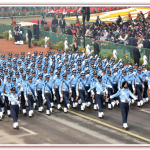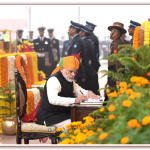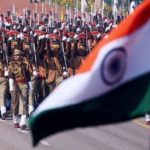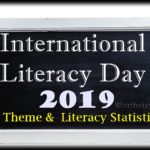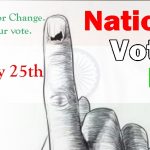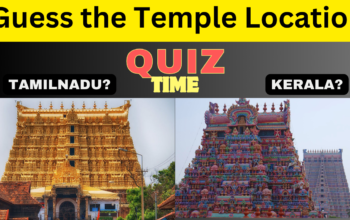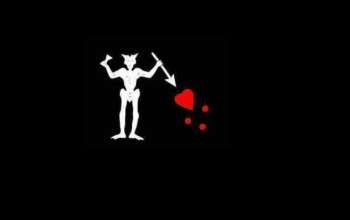26th January 1950 is one of the most important days in the Indian history. It was on this day the constitution of India came into force and India became a truly sovereign state.
In this day India became a totally republican unit. The country finally realized the dream of Mahatma Gandhi and the numerous freedom fighters who, fought for and sacrificed their lives for the Independence of their country.
So, the 26th of January was decreed a national holiday and has been recognized and celebrated as the Republic Day of India, ever since.

A Brief History of Indian Republic Day
India achieved independence from British Raj on 15 August 1947 following the Indian independence movement noted for largely peaceful non-violent resistance and civil disobedience led by Mahatma Gandhi. The independence came through the Indian Independence Act 1947 (10 & 11 Geo 6 c 30), an Act of the Parliament of the United Kingdom that partitioned British India into the two new independent Dominions of the British Commonwealth (later Commonwealth of Nations).
India obtained its independence on 15 August 1947 as a constitutional monarchy with George VI as head of state and the Earl Mountbatten as governor-general. The country, though, did not yet have a permanent constitution; instead its laws were based on the modified colonial Government of India Act 1935.
On 28 August 1947, the Drafting Committee was appointed to draft a permanent constitution, with Dr B R Ambedkar as chairman. While India’s Independence Day celebrates its freedom from British Rule, the Republic Day celebrates the coming into force of its constitution. A draft constitution was prepared by the committee and submitted to the Constituent Assembly on 4 November 1947.
The Assembly met, in sessions open to public, for 166 days, spread over a period of two years, 11 months and 18 days before adopting the Constitution. After many deliberations and some modifications, the 308 members of the Assembly signed two hand-written copies of the document (one each in Hindi and English) on 24 January 1950.
Two days later which was on 26 January 1950, it came into effect throughout the whole nation. On that day began Dr. Rajendra Prasad’s first term of office as President of the Indian Union. The Constituent Assembly became the Parliament of India under the transitional provisions of the new Constitution. This date is celebrated in India as the Republic Day.
(Source – Wiki)
The original text of the Preamble to the Constitution of India.
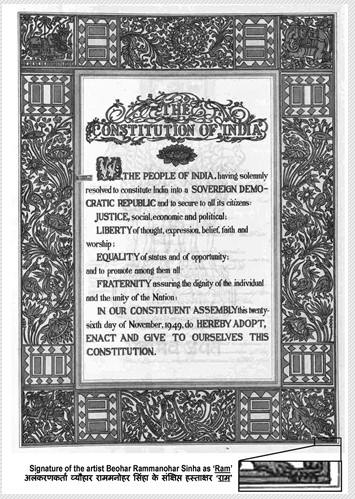
President Rajendra Prasad (in the horse-drawn carriage) readies to take part in the first Republic Day parade on Rajpath, New Delhi, in 1950.
Some Interesting Facts About the The First Republic day
- On 26 January, 1950 India became a Republic at 10.18 am.
- A few minutes later, at 10.24 am Dr. Rajendra Prasad was sworn in as the first President of India
- The first Constitution of India was handwritten in Hindi and in English. It was signed by the members of the Constituent Assembly on 24 January, 1950. These copies are still preserved in the Parliament’s library and are one of the significant relics of independent India.
- Between 1950 and 1954, India did not have a fixed venue for the Republic Day celebration. Initially it was held in Red Fort, then National Stadium, then in Kingsway Camp, and then in Ramlila ground. Finally in 1955 Rajpath was chosen as the permanent venue. This was the first Republic Day parade.
- The members of the Constituent Assembly also adopted the National Anthem – Jana Gana Mana – on 24 January 1950. It was written by Rabindranath Tagore in Bengali and later translated into Hindi.
Also read –
Our National Anthem – Jana Gana Mana – Lyrics – English Translation
How and Why did they chose Jan 26 as Republic Day ?
26 January was chosen as the Republic day because it was on this day in 1930 when Declaration of Indian Independence (Purna Swaraj) was proclaimed by the Indian National Congress as opposed to the Dominion status offered by British Regime.
Republic Day Celebrations
Today, the Republic Day is celebrated with much enthusiasm all over the country and especially in the capital, New Delhi where the celebrations start with the Presidential to the nation. The beginning of the occasion is always a solemn reminder of the sacrifice of the martyrs who died for the country in the freedom movement and the succeeding wars for the defense of sovereignty of their country. Then, the President comes forward to award the medals of bravery to the people from the armed forces for their exceptional courage in the field and also the civilians, who have distinguished themselves by their different acts of valour in different situations.
The different regiments of the army, the Navy and the Air force march past in all their finery and official decorations even the horses of the cavalry are attractively caparisoned to suit the occasion. The crème of N.C.C cadets, selected from all over the country consider it an honour to participate in this event, as do the school children from various schools in the capital. They spend many days preparing for the event and no expense is spared to see that every detail is taken care of, from their practice for the drills, the essential props and their uniforms.
The parade is followed by a pageant of spectacular displays from the different states of the country. These moving exhibits depict scenes of activities of people in those states and the music and songs of that particular state accompany each display. Each display brings out the diversity and richness of the culture of India and the whole show lends a festive air to the occasion. The parade and the ensuing pageantry is telecast by the National Television and is watched by millions of viewers in every corner of the country.
Also read
Where does the Republic Day parade begin and end?
Can we go and watch Republic Day Parade ?
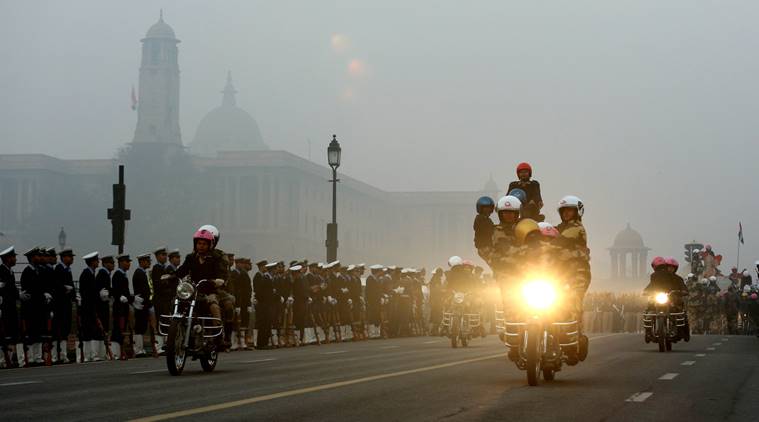
Yes we can. We need to buy tickets and the price range is Rs 500, Rs 100 and Rs 20.
Tickets for India’s Republic Day Parade are on sale from January 7 to January 25 every year, at Departmental Sales Counters in the following locations.
Location of Republic Day Parade 2019 Ticket Outlets
- North Block Roundabout
- Sena Bhawan (Gate 2).
- Pragati Maidan (Gate 1 at Bhairon Road).
- Jantar Mantar (Main Gate).
- Shastri Bhawan (near Gate 3).
- Jamnagar House (opposite India Gate).
- Red Fort (inside August 15 Park and opposite Jain Temple).
- Parliament House Reception Office, special counter for Members of Parliament.
The ticket counters are open daily from 10 a.m. to 12.30 p.m. and 2 p.m. to 4.30 p.m. In addition, one ticket counter at Sena Bhavan will remain open until 7 p.m. from January 23 to 25, 2019.
However, do note that all ticket counters will be closed in the morning on January 23, due to full dress rehearsal of the Republic Day Parade.
Aadhaar Card, Voter ID Card or government-issued identity card must be presented in order to purchase tickets.
Download official government notification.
You can also watch Republic day parade online here – http://republicday.nic.in
Related Posts
Hi there! I’m Sethu, your go-to guy for all things tech, travel, internet, movies, and business tips. I love sharing insights and stories that make life more interesting. Let’s explore the world together, one article at a time!
